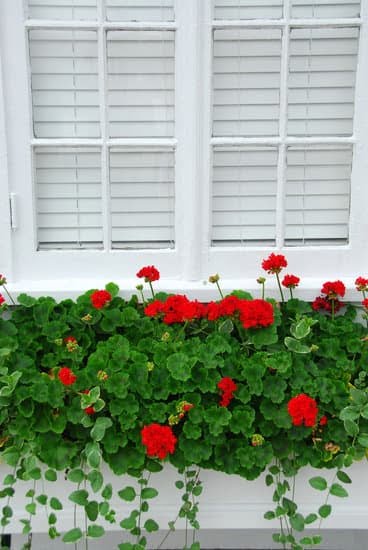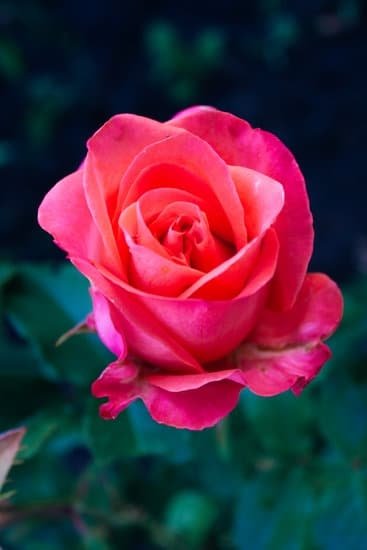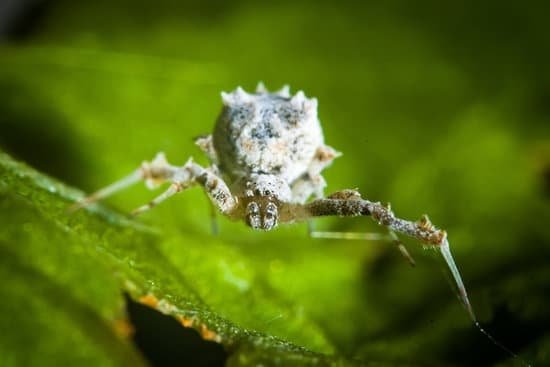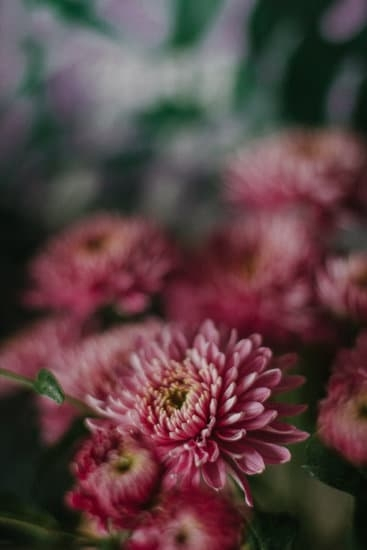Looking for gardening at home ideas to spruce up your outdoor space? Gardening at home is not only a rewarding and fulfilling hobby but also comes with a myriad of benefits.
From promoting mental well-being to providing fresh, organic produce, there are endless reasons to start your own home garden. In this article, we will explore the various aspects of gardening at home, from finding the perfect spot for your garden to creative DIY projects to enhance your outdoor space.
Gardening has numerous benefits for both physical and mental health. Not only does it provide a source of physical activity, but it also allows for stress relief and relaxation. Additionally, growing your own fruits and vegetables can lead to a healthier diet and reduce grocery costs. With the right guidance and resources, you can transform your living space into a beautiful oasis that provides countless rewards.
In this comprehensive guide, we will discuss everything you need to know about gardening at home. From choosing the right location for your garden to essential tools and supplies needed to get started, we will cover all the basics for beginners as well as provide expert tips for experienced gardeners.
Whether you’re interested in creating flower gardens or vegetable gardens, this article will help you find the perfect fit for your personal preferences. Let’s dive into the world of gardening at home and embrace the joys it has to offer.
Choosing the Right Location
When it comes to gardening at home, one of the most important decisions you’ll make is choosing the right location for your garden. The success of your garden depends on finding the perfect spot that receives adequate sunlight, has good soil quality, and is easily accessible for maintenance. Here are some tips for finding the ideal location for your home garden:
1. Assess Sunlight: Before you start planting, it’s essential to assess the amount of sunlight that the location receives. Most plants require at least 6 hours of direct sunlight each day to thrive. Take note of any shady areas caused by buildings, trees, or other structures that could obstruct sunlight.
2. Soil Quality: The quality of the soil in your chosen location is crucial for a successful garden. Conduct a soil test to determine its pH level and nutrient content. You may need to amend the soil with organic matter or fertilizer to improve its quality and provide a healthy environment for your plants.
3. Accessibility: Consider how easily accessible the location is for watering, weeding, and harvesting. Choose a spot that is convenient for regular maintenance tasks to ensure that your garden stays healthy and productive throughout the growing season.
By carefully considering these factors when choosing the right location for your home garden, you can set yourself up for gardening success and enjoy a fruitful harvest of vegetables, herbs, or flowers. These gardening at home ideas will help you create a thriving and beautiful outdoor space that you can enjoy year-round.
Types of Gardens
When it comes to gardening at home, there are several types of gardens to consider. One popular option is a vegetable garden, which allows you to grow your own fresh produce right in your backyard. This type of garden can be a great way to save money on groceries and enjoy the satisfaction of growing your own food.
Additionally, flower gardens are another beautiful option for those looking to add color and beauty to their outdoor space. Whether you prefer bright and bold blooms or delicate and fragrant flowers, there are endless possibilities for creating a stunning flower garden.
In addition to vegetable and flower gardens, some homeowners may also choose to create herb gardens or even container gardens. Herb gardens are perfect for adding fresh flavors to your cooking, while container gardens are a great choice for those with limited outdoor space. Ultimately, the type of garden you choose will depend on your personal preferences, available space, and the amount of time you can dedicate to gardening at home.
For anyone interested in exploring more exotic options, tropical gardens or succulent gardens can also be an exciting venture. Creativity and resourcefulness in utilizing outdoor space is key when building these extravagant but sustainable spaces.
| Garden Type | Key Features |
|---|---|
| Vegetable Garden | Grow fresh produce at home |
| Flower Garden | Add color and beauty to your outdoor space |
| Herb Garden | Add fresh flavors to your cooking |
| Container Garden | Ideal for limited outdoor space |
Essential Gardening Tools and Supplies
When starting your gardening journey, it’s essential to have the right tools and supplies to ensure success with your home garden. From preparing the soil to maintaining your plants, having the necessary equipment will make the process easier and more enjoyable. Some of the essential gardening tools include a trowel, pruners, gloves, a watering can or hose, and a rake.
For planting seeds or seedlings, having a shovel or spade will also be necessary. Additionally, investing in good quality tools will ensure they last longer and make gardening tasks more efficient.
In addition to tools, having the right supplies is crucial for the health and longevity of your garden. This includes items such as soil, compost or fertilizer, pots or planters, stakes for support, and protective gear such as plant covers or row covers. It’s important to consider the specific needs of the plants you intend to grow in order to determine which supplies are necessary for your garden.
Moreover, ensuring you have proper storage for your tools and supplies is also imperative. A shed or storage box can help keep everything organized and easily accessible when needed. Having a designated space for gardening equipment will also prevent any clutter in your outdoor area. By having all these essential gardening tools and supplies on hand before starting your garden project, you’ll be setting yourself up for success and making the process much more enjoyable.
| Essential Gardening Tools | Gardening Supplies |
|---|---|
| trowel | soil |
| pruners | compost / fertilizer |
| gloves | pots / planters |
Garden Design and Layout
When it comes to creating a beautiful and functional outdoor space for your home garden, the design and layout are key elements to consider. Whether you have a small or large area to work with, thoughtful planning can make a significant impact on the overall look and feel of your garden. Here are some tips and ideas for designing and laying out your home garden:
- Consider the terrain: Take note of any slopes, natural drainage patterns, and soil conditions in your garden area. This will help you determine the best placement for plants and features.
- Define zones: Divide your garden into different areas based on function, such as a dining area, a play space for children, and a relaxation zone. This will help you organize the space and make it more enjoyable to use.
- Choose focal points: Incorporate eye-catching elements like sculptures, water features, or specimen plants to draw attention and create interest in your garden.
In addition to these design considerations, it’s also essential to think about how you’ll arrange plants within the space. Think about factors like color, texture, height, and bloom time when placing plants in your garden. By creating an appealing layout that takes these factors into account, you’ll be sure to have a visually stunning home garden.
Ultimately, the goal of designing and laying out your home garden is to create an inviting outdoor space that reflects your personality and provides a place for relaxation and enjoyment. With thoughtful planning, creative ideas, and strategic plant placement, you can transform your outdoor area into a beautiful oasis right at home.
Planting and Growing Tips
Choosing the Right Plants
When it comes to planting and growing your garden, one of the most important factors to consider is choosing the right plants for your specific climate and soil conditions. Researching which plants thrive in your area will ensure that you are setting yourself up for success from the very beginning. Additionally, taking into account the amount of sunlight and shade in your chosen location will help you choose plants that will flourish in their new environment.
Proper Watering and Feeding
Watering and feeding your plants is essential for their growth and overall health. Different types of plants require different amounts of water, so it’s important to understand each plant’s specific needs. Additionally, fertilizer can be used to provide essential nutrients to your plants, promoting stronger growth and more vibrant blooms.
Pest Control and Disease Management
Dealing with pests and diseases is a common challenge for gardeners. Using natural pest control methods such as companion planting or beneficial insects can help minimize damage from unwanted critters. It’s also crucial to regularly inspect your plants for signs of disease and take appropriate action if any issues arise. By staying proactive with pest control and disease management, you can ensure that your garden remains healthy and thriving throughout the growing season.
By implementing these planting and growing tips into your gardening at home ideas, you’ll be well on your way to creating a beautiful and successful garden that brings joy and beauty to your outdoor space.
DIY Garden Projects
When it comes to gardening at home, there are many DIY projects that can enhance the beauty and functionality of your garden. From adding unique features to creating practical solutions, DIY garden projects can be both fun and rewarding. Here are some creative ideas for enhancing your home garden.
Upcycled Garden Décor
One of the most enjoyable aspects of gardening at home is the opportunity to get creative with upcycled garden décor. Whether it’s repurposing old furniture into unique planters or transforming everyday household items into garden art, upcycling adds a personal touch to your outdoor space. Consider using old tires as flower beds, turning mason jars into hanging lanterns, or upcycling pallets into vertical gardens. The options are endless and allow you to express your individual style in your garden.
DIY Water Features
Adding a water feature to your garden can create a soothing and tranquil atmosphere. A simple DIY project involves creating a small pond or waterfall using pre-formed liners or recycled containers. You can also consider building a fountain using salvaged materials such as pots, buckets, or even an old sink. Not only do DIY water features add visual appeal to your garden, but they also attract beneficial wildlife such as birds and butterflies.
Vertical Gardening
For those with limited space, vertical gardening offers a practical solution for maximizing growing area while adding visual interest to your home garden. DIY vertical gardens can be created using recycled gutters, pallets, or trellises secured to walls or fences. This technique not only adds greenery to smaller spaces but also provides an opportunity for growing herbs, flowers, and vegetables without taking up valuable ground space.
By incorporating these DIY garden projects into your gardening at home ideas, you can elevate the aesthetics of your outdoor space while showcasing your creativity and resourcefulness. These projects not only enhance the beauty of your garden but also provide a sense of satisfaction from creating something unique with your own hands.
Garden Maintenance
Once you have put in the effort to create a beautiful garden, it’s important to maintain it in order to keep it healthy and thriving year-round. Regular maintenance is essential for keeping your garden looking its best and ensuring that your plants continue to grow and flourish. Here are some tips for maintaining a healthy and beautiful garden throughout the year.
One of the most important aspects of garden maintenance is regular watering. Make sure to water your plants consistently, especially during dry or hot periods. Proper watering will help your plants stay hydrated and healthy, ultimately leading to better growth and blooming.
Additionally, it’s important to regularly check for any signs of pests or disease in your garden. Keep an eye out for any unusual discoloration or damage to the leaves, as well as any visible pests, and take action as needed to protect your plants.
Another crucial part of garden maintenance is regular pruning and weeding. Pruning helps promote healthy growth and improves the overall appearance of your garden by removing dead or overgrown branches. Weeding is also important for maintaining a tidy garden, as it helps prevent weeds from taking over and competing with your plants for nutrients. By staying on top of pruning and weeding tasks, you can ensure that your garden remains neat and well-maintained throughout the year.
In addition to these basic maintenance tasks, it’s also important to fertilize your plants regularly and provide them with the necessary nutrients they need to thrive. You can use organic fertilizers or compost to enrich the soil and provide essential nutrients for your plants. By incorporating these maintenance practices into your gardening routine, you can enjoy a healthy and beautiful garden all year long.
Remember that good maintenance is key when embracing the joys of gardening at home ideas.
Conclusion
In conclusion, gardening at home offers numerous benefits for both physical and mental well-being. Not only does it provide an opportunity to grow your own fresh produce and beautiful flowers, but it also allows you to connect with nature and enjoy the therapeutic effects of spending time outdoors. By embracing gardening at home, individuals can find a rewarding hobby that promotes relaxation, creativity, and a sense of accomplishment.
As you consider diving into the world of gardening at home, remember the importance of choosing the right location for your garden. Whether it’s a sunny spot for vegetables or a shaded area for delicate flowers, finding the perfect location is key to the success of your garden.
Additionally, selecting the type of garden that best fits your interests and lifestyle is essential. Whether it’s a vegetable garden or a flower garden, there are endless possibilities to explore when it comes to creating an outdoor space that brings you joy.
Incorporating essential gardening tools and supplies, creative DIY projects, and proper maintenance practices into your gardening routine will ensure that your home garden thrives year-round. By following planting and growing tips and designing a functional layout for your garden, you can create a beautiful outdoor sanctuary that enhances your living space. Embracing gardening at home allows individuals to cultivate their own piece of paradise while reaping the numerous rewards that come with nurturing plant life.
Frequently Asked Questions
How to Create a Garden?
Creating a garden involves multiple steps, starting with choosing the right location based on sunlight and soil quality. Then, it’s important to plan what type of garden you want (vegetable, flower, etc.)
and to prepare the soil by tilling and adding compost. After that, it’s a matter of planting and maintaining the garden by watering, weeding, and fertilizing as needed.
What Is the Most Popular Home Gardening Method?
The most popular home gardening method is probably container gardening. This method allows people to grow plants in pots or containers, making it suitable for those with limited outdoor space or poor soil conditions. Container gardening also allows for more control over the environment and makes it easier to move plants if necessary.
How Do You Layout a Garden?
When laying out a garden, it’s essential to consider factors like sunlight exposure, wind direction, and water access. It’s also important to think about the layout of plants in terms of their size, growth habits, and compatibility with each other. Additionally, creating pathways for access and maintenance should be part of the garden layout plan.

Welcome to my gardening blog! I am passionate about plants and enjoy sharing my knowledge and experiences with others. In this blog, I will write about everything related to gardening, from tips on how to get started to updates on my own garden projects.





